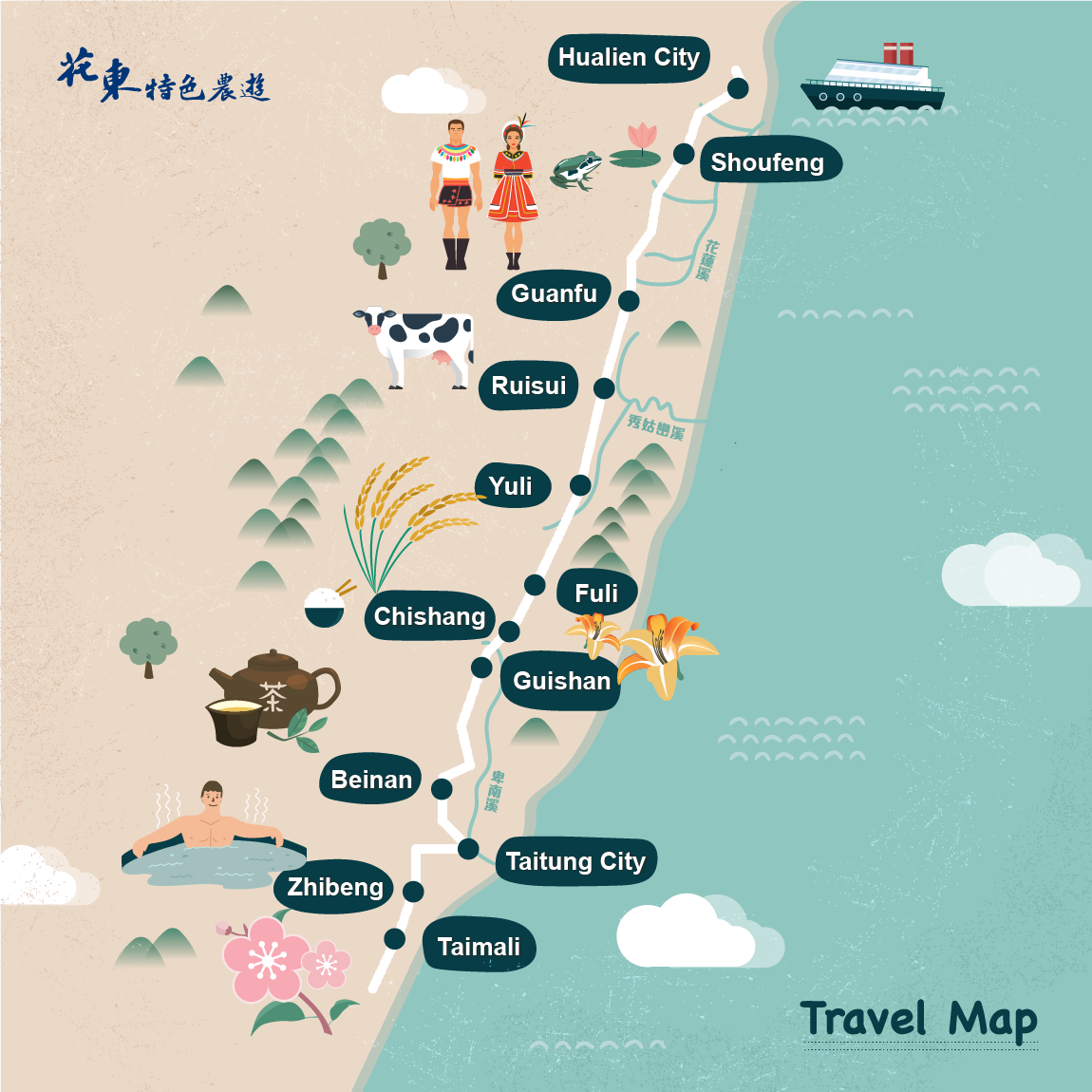
Winding Through the Rift Valley and Appreciating the Produce of All Seasons
The Internet celebrities like photo shooting here and the parents with children are looking for fun, while the senior groups would like to have a leisurely trip. Provincial Highway 9 winds through the rift valley and from Huanlien to the south, it passes Shoufeng, Guanfu, Ruishui, Yulin, Fuli, Chishang, Guanshan, Luye, and Beinan, each township has its own produce by seasons. From Yuli to Guanshan, the vast rice wave, the golden yellow daylily from Fuli to Taimali, or local fruits such as plums or organic Luoshan tofu derived from its favorable location are ingrained in my impression. Here we plan trips all year round by seasons for Internet celebrities, parents and children, as well as the senior groups, we wish all have fun.
-
 Cherry Blossom, Shaddock Blossom, Plum, Loquat, and Taiwan Lily
Cherry Blossom, Shaddock Blossom, Plum, Loquat, and Taiwan Lily
-
 Daylily, Dragon Fruit, Watermelon, and Rice
Daylily, Dragon Fruit, Watermelon, and Rice
-
 Dragon Fruit, Sugar Apple, Shaddock, and Rice
Dragon Fruit, Sugar Apple, Shaddock, and Rice
-
 Sun Flower, Rape Flower, Cosmos, Sugar Apple, Orange, Roselle, and Quinoa
Sun Flower, Rape Flower, Cosmos, Sugar Apple, Orange, Roselle, and Quinoa
-
 Guava, Pineapple, and Tea
Guava, Pineapple, and Tea
Little tidbit
★ What are the six levels of industrialization?
The term "six levels of industrialization" originates from Japan that was intended to liven up the agricultural, forestry, and fishing industries and assist with the transformation of agriculture. Simply put, the term refers to an industrialization of a product by multiplying agricultural production (one level) by agricultural processing (two levels) by product sales (three levels), yielding six levels. This concept of multiplication leads to increased revenue for producers, industrial upgrades, and higher added values.
For example, a persimmon orchard was once simply a place of production. Now, activities such as persimmon picking, guided tour on making dehydrated persimmons, and persimmon dying DIY combine nature, ecology, and culture with production, making the activities educational and transforming pure agriculture into an agricultural leisure industry. Consumers not only get to appreciate the hard work of producers but also learn more about local culture and customs. This connects producers with consumers in a positive cycle.
★ Let's talk about food and agriculture education.
Food and agriculture have been inextricably intertwined since the get-go. In the agricultural age, each family was often responsible for every step in the entire life cycle of an agricultural crop, from production, harvest, processing, to food on the table. However, with the advent of the industrial age, people have been separated further and farther from agriculture. Food, agriculture, and land have almost totally been removed from the daily lives of people in this time and age.
Food safety incidents in recent years have led people to pay more attention to food. Topics like slow food, local production and consumption, low carbon food, and from production to dining room table have been raised. These topics can all be included in the broadly defined food and agriculture education.
Food and agriculture education includes farming experience and dining education. Through hands-on participation and learning, people can rediscover the real relationship between people and food, such as cultivation methods that are friendly to the environment, knowledge of the seasonality of fruits, and correct way of eating. More importantly, this helps people know this land and appreciate their food and environment.